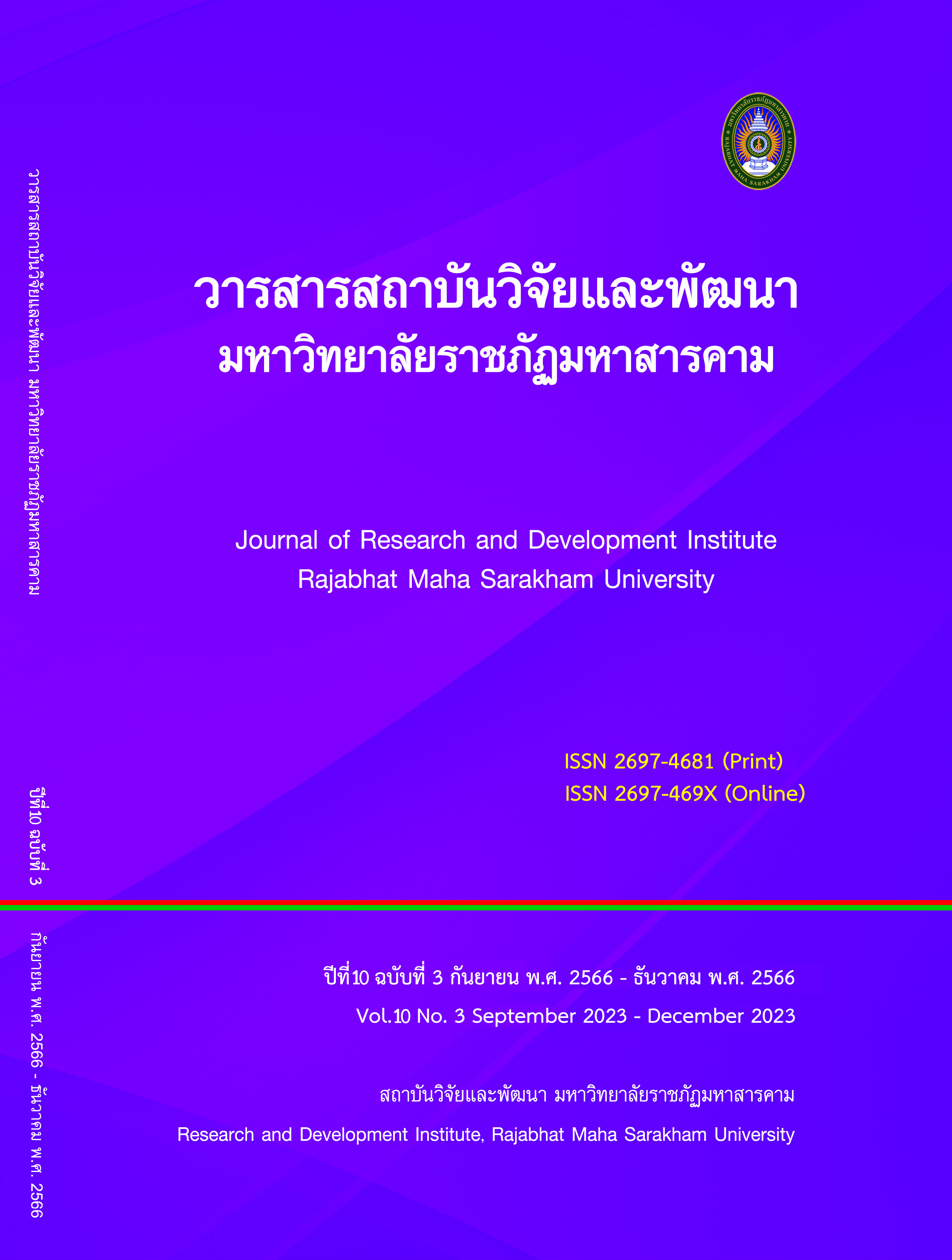The Mekong River Basin Buddhist Tourism Promotion Model to Upgrade to Become a Cultural Product on the Nong Khai-Amnat Charoen Strategic Road
Keywords:
Tourism promotion model , Mekong Buddhist culture , strategic pathAbstract
The objectives of this research article were 1) to study and search for Buddhist cultural attractions in the Mekong River Basin. on the Nong Khai - Amnat Charoen Strategic Road route 2) to study the factors affecting Buddhist cultural tourism in the Mekong River Basin on the Nong Khai-Amnat Charoen Strategic Road route; 3) To establish and confirm a model for promoting Buddhist cultural tourism in the Mekong River Basin On the strategic road Nong Khai - Amnat CharoenIt is purely qualitative research. The target group is local government organizations. Government Partnerships of Nong Khai - Amnat Charoen, 60 persons. The data collection tools were interview forms, question sets used in group discussions. All qualitative data analysis uses content analysis.
The results of the research were as follows: 1) The search for Buddhist cultural sites on the Mekong River Basin on the Nong Khai-Amnat Charoen Strategic Road route revealed that the architectural and cultural attractions of the Mekong River Basin on the Nong Khai - Amnat Charoen Strategic Road route consisted of temples, Ubosot, Wihan, Buddha images.
inventing the base inside the ubosot Dharma practice grounds, natural forests, mountains, archaeological sites, ancient leaves of parapet, and Phra That Chedi, found that the Mekong-Buddhist cultural attractions on the Nong Khai-Amnat Charoen Strategic Road route consisted of serpents, meaning serpents. Legendary history originated from Kham Chanod, Nong Han District. Therefore, there is a cultural tradition Worshiping the Naga Giant Goku tradition or a giant kneeling It is believed that it is a giant that helps protect villages and communities in the area along the Mekong River of Amnat Charoen Province. There are different identities for each tribe, ethnicity, dress, cotton, silk, patterns, stains, cotton fermented in natural mud. There is a distinctive and beautiful identity of each province. The invention of Thai musical instruments, pin-can making, port village of Nakhon Phanom province and homestay arrangements to accommodate tourists 2) Factors affecting the Mekong Buddhist Cultural Tourism Site on the Nong Khai-Amnat Charoen Strategic Road route, found that the potential of the area consisted of beautiful, complete, access to tourist attractions, convenient, with signs, maps, documents, leaflets showing tourist attractions. Have a guide or storyteller It was found that the partnership aspect of Mekong Buddhist cultural tourism sites consisted of building a village identity. in creating cultural product identity budget support Regarding the creation of cultural activity groups, it was found that the support from the local administrative organizations consisted of supporting and conserving cultural activities. Supporting the budget for activities Supporting public relations Supporting the village identity Supporting cultural product identity It was found that in terms of promotion and support from network partners Consisting of supporting conservation activities budget support Supporting materials, equipment, activities, promoting and supporting the village identity Promotion of cultural product identity It was found that the aspect of self-management consisted of building a village identity. Building product and cultural identity in terms of natural resources, materials, equipment, processes, funding, budgeting, activities Activity membership building 3) Formation and confirmation 1) Area potential 2) Partnership 3) Support from local administrative organizations 4) Promotion and support from network partners 5) Self-management.
References
Pilwas, T. (2012). Strategy for promoting the tourism industry for community economic development in the Andaman Triangle (Phuket, Phang Nga, Krabi). Pathum Thani : Valaya Alongkorn Rajabhat University. Under the Royal Patronage.
Puangpanya, B. (2018). Management of cultural products in the Mekong Basin Special Economic Zone. Maha Sarakham : Maha Sarakham Rajabhat University.
Sujarit, B. & Sujarit, C. (2017). Community tourism management model of Nang Phaya Subdistrict, Tha Pla District, Uttaradit Province. Academic Journal: Uttaradit Rajabhat University. 12(2), 53-65.
Srirathu, W. (2008). Potential of ecotourism destinations in Khao Kho District. Phetchabun Province. Bangkok: Srinakharinwirot University.
Jitthangwattana, B. (2006). Development and conservation of tourist attractions. Bangkok : Pochanasuansri.
Keeves P.J. (1988). Educational research, methodology and measurement :An international handbook. Oxford : Pergamon Press.
Downloads
Published
How to Cite
Issue
Section
License
Copyright (c) 2023 พระธนาวุฒิ ฐิตเมโธ, สัญญา เคณาภูมิ , เสาวลักษณ์ โกศลกิตติอัมพร

This work is licensed under a Creative Commons Attribution-NonCommercial-NoDerivatives 4.0 International License.
Articles that are published are copyrighted by the authors of the articles







